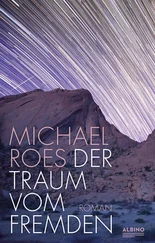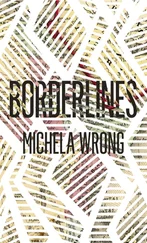But the settlers trickled in nonetheless. Fleeing overcrowded Europe, the new tribe dubbed the wazungu – ‘people on the move’ – headed in the main for the Rift Valley's grasslands, which felt more than a little familiar. On a drizzly day, when the chill mists crept stealthily down from the escarpment, they bore a striking resemblance to the rolling heaths of Scotland, a fact that seemed to confirm the settlers in the correctness of their choice. Much has been written about the antics of the dissolute aristocrats who made up the Happy Valley expatriate set. But most of the land-hungry British arrivals in ‘Keeenya’, as they pronounced it, were from decidedly modest backgrounds, grabbing the chance for a new start. In 1903 there were only around a hundred settlers; by the late 1940s the number had risen to 29,000, boosted by demobilised British soldiers. It would peak at 80,000 in the 1950s. And as the new arrivals marked up their farms, everything began to change for the more than forty local tribes.
Back in Britain, the citizen's right not to have his taxes raised or property confiscated on the whim of a greedy ruler had been recognised since the Magna Carta. But these fundamental principles did not apply to the British Empire's African subjects. A series of regulations passed at the turn of the century decreed that any ‘waste and unoccupied land’ belonged to the Crown, which could then dispose of it as it wished, usually in the form of 99-and 999-year leases to settlers. In order to force Africans to take paid work on white-owned farms, which were desperately short of labour, the colonial authorities levied first a hut tax and then a poll tax. In the new colony of Kenya, formally declared in 1920, the African citizen was also prevented from competing with white farmers, who alone enjoyed the right to grow tea, coffee, pyrethrum and other crops for export.
The fact that many of the communities the British encountered did not have simple hierarchical structures held up implementation of the new laws only temporarily. The British simply appointed their own chiefs from the ranks of the translators, mercenaries and other ‘friendlies’ willing to collaborate. It's surely no coincidence that so much power in Kenya today rests in the hands of seventy-and eighty-year-olds who were impressionable youngsters in the years when the draconian colonial regulations made their traumatic impact on African lifestyles. They absorbed vital lessons in how the legal system, the administration and the security forces could be abused to extract labour and resources from an alien land and its resentful people. The first layer on the rubbish tip of Kenyan graft had been deposited.
Inhabitants of pre-colonial Kenya had certainly been aware of their different ethnic languages and customs. But that awareness was a fluid, shifting concept. While sections of the Kikuyu, Maasai and Kamba frequently fought each other over women and cattle, they also traded with one another, intermarried and exploited the same lands, with the pastoralist Maasai, for example, often relying on the agriculturalist Kikuyu to feed their families when drought killed their herds. All that ended with colonialism. Not only did the boundaries drawn by Western powers in the wake of the Berlin conference of 1884–85 slice across the traditional migration routes of communities straddling what had suddenly been delineated as Kenya, Tanzania and Uganda, the new colonies were themselves subdivided in new, awkward ways. By 1938, Kenya had been partitioned into twenty-four overcrowded native reserves – ‘Kamba’ for the Kamba people, ‘Kikuyu’ for the Kikuyu, and so on – and the fertile ‘White Highlands’ for exclusive European use, where Africans could not own land.
African males were only allowed to travel outside their reserve if they bore the hated kipande , an identity card carried around the neck in a copper casket. Introduced to prevent employees from moving to better-paid jobs, the kipande corralled Africans inside rigidly defined areas. Wary of anything that could mushroom into a national anticolonial movement, the authorities banned most political associations; the few allowed were restricted to their founders' ethnic territories. The settlers wanted Africans to act small, think local. It made them so much more manageable.
Registering that white administrators had pigeonholed them, local communities learnt to play the game. Population levels were soaring, thanks to the advent of Western medicine, and the most important asset in a world offering neither pensions, welfare payments nor health insurance – land – would henceforth, they realised, be distributed on a strictly ethnic basis. To those on the reserves, who increasingly viewed their communities as mini-nations in fierce competition with one another, Kenyans from outside were ‘foreigners’. The missionaries played their part in this process of self-definition, their translations of the Bible standardising local dialects into formal tribal languages. ‘This conversion of negotiable ethnicity into competitive tribalism has been a modern phenomenon,’ writes historian John Lonsdale. ‘Tribe was not so much inherited as invented.’ 4
The Kalenjin, Daniel arap Moi's ethnic group, represents one such invention. ‘Kalenjin’ – literally ‘I say to you’ – was actually the opening line of a series of radio broadcasts used by the colonial administration to muster recruits for the King's African Rifles during the Second World War. It became a label for eight Nilotic communities who shared the Nandi language. Another convenient tag – although this one originated within the community, which saw an overarching tribal identity as lending weight to its dealings with the authorities – was ‘Luhya’ (‘those of the same hearth’), slapped onto twenty subgroups in the 1930s and 1940s. It comes as no surprise to discover that the stereotypes Kenyans apply to one another today, from the fierceness of the Maasai to the supposed domesticity of the Kamba, faithfully reflect the roles the colonial authorities allotted each group: Maasais as mercenaries, Kambas as first porters and then as kitchen workers. Growing up on a white-owned farm in the Rift Valley in the 1940s, the future Nobel Peace Prize-winner Wangari Maathai noticed how the colonial experience reinforced ethnic distinctions. ‘Kikuyus worked in the fields, Luos laboured around the homestead as domestic servants, and Kipsigis took care of the livestock and milking,’ she records in her autobiography. ‘Most of us on the farm rarely met people from other communities, spoke their languages or participated in their cultural practices.’ 5
Two World Wars, in which thousands of Kenyans served, radicalised the colony's African population, challenging this vision of the world. In the muddy trenches of eastern Germany, on the bleak escarpments of Ethiopia and in the jungles of Burma, they saw their white rulers fight and die just like other men. They grasped that the British were mere mortals, their empire beleaguered. The learning experience took place on both sides. ‘The younger settlers who had fought in the war with the African had an entirely different outlook on African political advance and the African himself to those who had remained behind,’ wrote the pre-independence minister of agriculture Michael Blundell, who led Luo troops to fight the Italians in Ethiopia in 1940. ‘The colonial relationship of governing and subject races had been eroded.’ 6 Confronted by a range of increasingly belligerent political associations and trade unions calling for a voice in Kenya's administration, London struggled to justify British policy.
The Mau Mau uprising of the 1950s finally exposed the unsustainability of the colonial carve-up. In the run-up to independence in 1963, the regulations that had shaped a sense of separate identity were scrapped, as Africans were granted the right to grow what crops they pleased, to buy land outside the reserves, and to campaign on national issues. But ethnic straitjackets, once tailored, cannot so easily be unstitched. Like so many black leaders of the 1960s, first president Jomo Kenyatta dedicated his energies not to overturning but to inheriting the system left behind by the colonial powers. Only this time it would be his Kikuyu ethnic group, rather than Kenya's departing white tribe, that would benefit from the ‘ matunda ya uhuru ’ – the fruits of independence. While generously helping himself – he taunted former Mau Mau veteran Bildad Kaggia for having so little to show for his liberation war – he made sure his Kikuyu kinsmen got served first when it came to constituency funding, procurement contracts and white-collar jobs in the administration. The fact that no single tribe accounted for more than about a fifth of Kenya's population meant marriages of convenience with at least two other large ethnic groups were always necessary. But priorities were clear. ‘My people have the milk in the morning, your tribes the milk in the afternoon,’ the president told non-Kikuyu ministers who complained.
Читать дальше












